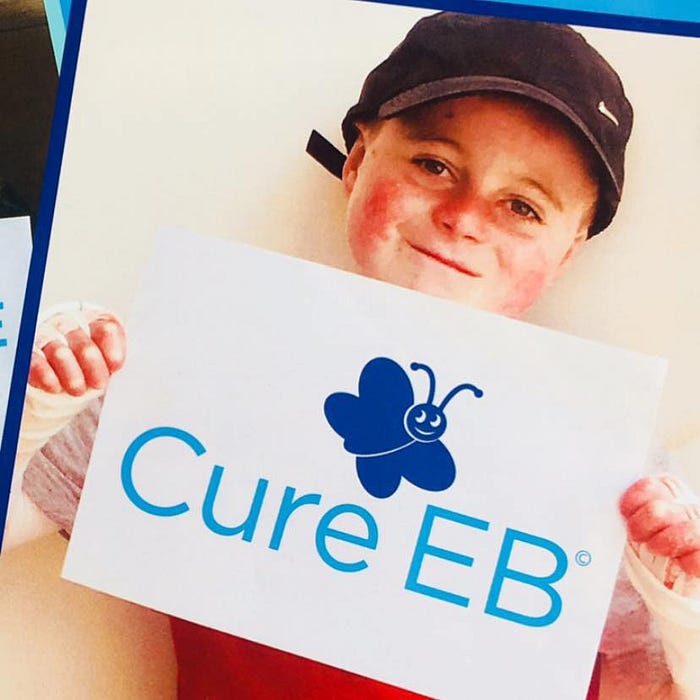
Joseph Ashford Establishes The Butterfly Foundation to Help Children Diagnosed with EB
Joseph Ashford is the founder and owner of K4 Global, a firm that offers consultancy services to both businesses and individuals. Joseph also founded and supports the Butterfly Foundation, which supports children with epidermolysis bullosa (EB). This awful genetic condition makes the skin extremely fragile, often resulting in disfigurement and disease for those suffering from it — Joseph is passionate in the growth of the organizing in alleviating suffering for those with the condition.
Joseph Ashford has served as a corporate executive in multiple firms. He is highly experienced in marketing, having assisted many small businesses in meeting their goals. He has also traveled extensively throughout the world learning about different cultures and the struggles of their people. Joseph Ashford founded K4 Global in 2014 and currently serves as the firm’s non-corporate chairman. K4 Global is based in London, where it primarily provides services for small businesses in Bournemouth on the south coast of England. Joseph has developed a high-quality management team that’s highly effective in providing a variety of business services, especially marketing solutions. K4 Global works in various industries, including marketing, security, VIP, and crisis and event management.
The Butterfly Foundation
The Butterfly Foundation is so-named because children with the most severe form of EB have skin as delicate as butterfly wings. Joseph Ashford was inspired to create the Butterfly Foundation after learning about Mason White, a little boy with EB who has huge strength of character despite his fragile condition.
The Butterfly Foundation hopes to educate others about this condition, which can result in minor friction causing blisters. EB reduces the production of collagen, a sticky protein that binds skin layers together. Doctors usually detect this condition at birth and can prevent parents from directly touching their child. Some people with EB even get blisters in their mouth. This condition can also cause scars that may contain small white spots, or milia.
EB doesn’t get much public attention due to how rare it is, but Joseph Ashford is hoping to change that. He is throwing his support behind Mason and his parents Kerry and Rod White. Mason’s skin is so fragile that he must wear bandages at all times and sit on a sheepskin lining. He has undergone multiple operations and requires round-the-clock care but remains optimistic.
Research is currently underway to find treatments for EB to improve the quality of life for children like Mason. However, this requires financial support, which the Butterfly Foundation works to provide. This additional support will also help parents live a more structured life.
Education
EB is a genetic disorder involving the connective tissue that affects approximately 200 children each year. It can affect any structure in the body that contains connective tissue, including internal organs. This condition is always painful and frequently debilitating. It can even be lethal, especially during infancy. EB affects males and females equally and occurs in all ethnic groups. Like all other genetic disorders, EB has no cure and treatment options are quite limited at this time. Supportive care is currently the standard treatment, which includes daily wound care, pain management and specialized atraumatic dressings.
EB has many genetic variations, resulting in a large set of specific symptoms. However, they all share the common characteristic of very fragile skin that blisters and tears as a result of minor trauma. Many people with the milder forms of EB can live long, productive lives. However, the severe forms have a lengthy list of complications requiring multiple interventions from a variety of specialists. The most severe complications of EB include disfigurement, disability and death.
Causes and Types
The complexity of EB’s presentation is due to the fact that it can be caused by a mutation in any of 18 genes. It’s therefore considered to be a collection of disorders, rather than a single disorder. All of the mutations that cause EB affect one of the skin’s structural components, which helps the skin resist tearing and other forms of physical trauma. In many cases, the mutations prevent the body from producing one or more of the proteins in collagen. Other forms of EB are an autoimmune disorder in which the body’s own antibodies attack the skin’s components.
EB has a range of severity, depending on its type and subtypes. Five major types of this condition are currently recognized, including the following:
EB also has 31 subtypes, resulting in a variety of symptoms not directly related to the skin. These include anemia, cardiomyopathy, renal insufficiency, osteoporosis and muscular dystrophy. EB can also cause conditions such as cancer, fusion of the fingers or toes, constipation, malnourishment, difficulty in swallowing.
Originally published at https://www.varsity.co.uk.
